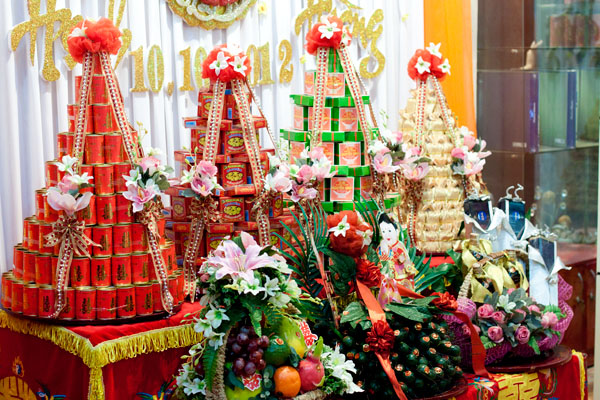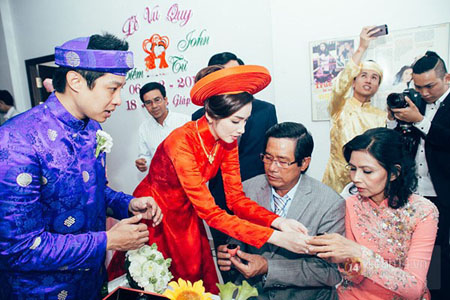The August Revolution of 1945 that put an end to eight decades of foreign domination also introduced democratic practices. One was the "New Model of Life'’ which liberated the people from out- moded customs.
Old wedding rituals, for instance, had ruined many a family in the countryside. In the towns, the rich were vying one another in aping Western ways, with the result that what they produced was a pitiful, unconvincing imitation.
Wedding rituals of the old fashion were based on etiquette pre- scribed by 12th-century Chinese philosopher Zhu Xi in his Van Cong Gia Le (Family Ceremony by Chu Van Cong). The rituals, even reduced to their simplest form, still required the observation of many operations — negotiations conducted with a go-between, exchange of the horoscopes of the man and the woman, engagement, the wedding ceremony, the Red Thread Ceremony in honor of Old Man of the Moon or the Household Genius, the Second Day Visit to the bride’s parents, the due to be paid to the home village of the bride-groom, and so on and so forth.
For the engagement ceremony alone, the bride’s family would demand for each member of the clan and each friend a gift consisting of one banh chung (square cake), one banh day (round cake), one roll of nem (pork pie), four areca nuts and four betel leaves. Then, there would be half of the village to wine and dine on the day of the wedding as a way to repay "debts of the mouth."
Those old onerous practices were done away with by the August Revolution, and a "New Life Wedding Ceremony" was consecrated by the two resistance wars that followed.
A wedding then would be a simple gathering of parents, friends and colleagues during which the parents-in-law and, most especially, the representatives of the offices, factories or cooperatives where the bride and the bridegroom were working, would exhort, the couple "not to forget their duties towards the Motherland in their new-found happiness."
Such "meetings", though always livened up with music, singing and recital of poetry finally became monotonous and unattractive, and some people, after the return of peace, began to turn to a more lively form by drawing from both the traditional and the foreign.
Whether or not this new form is viable is yet to be seen because the marriage between the old and the new must be the happy ending of a real love affair.



